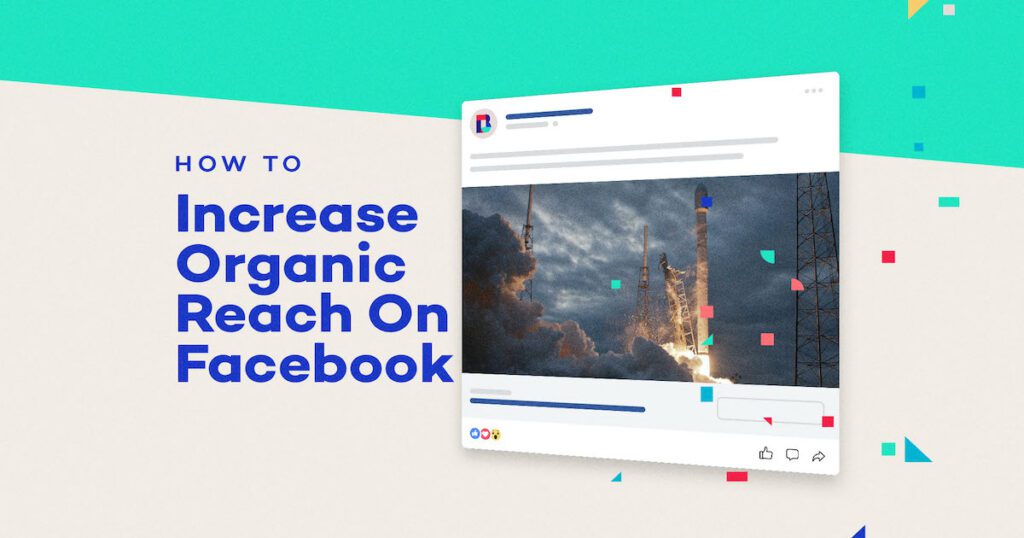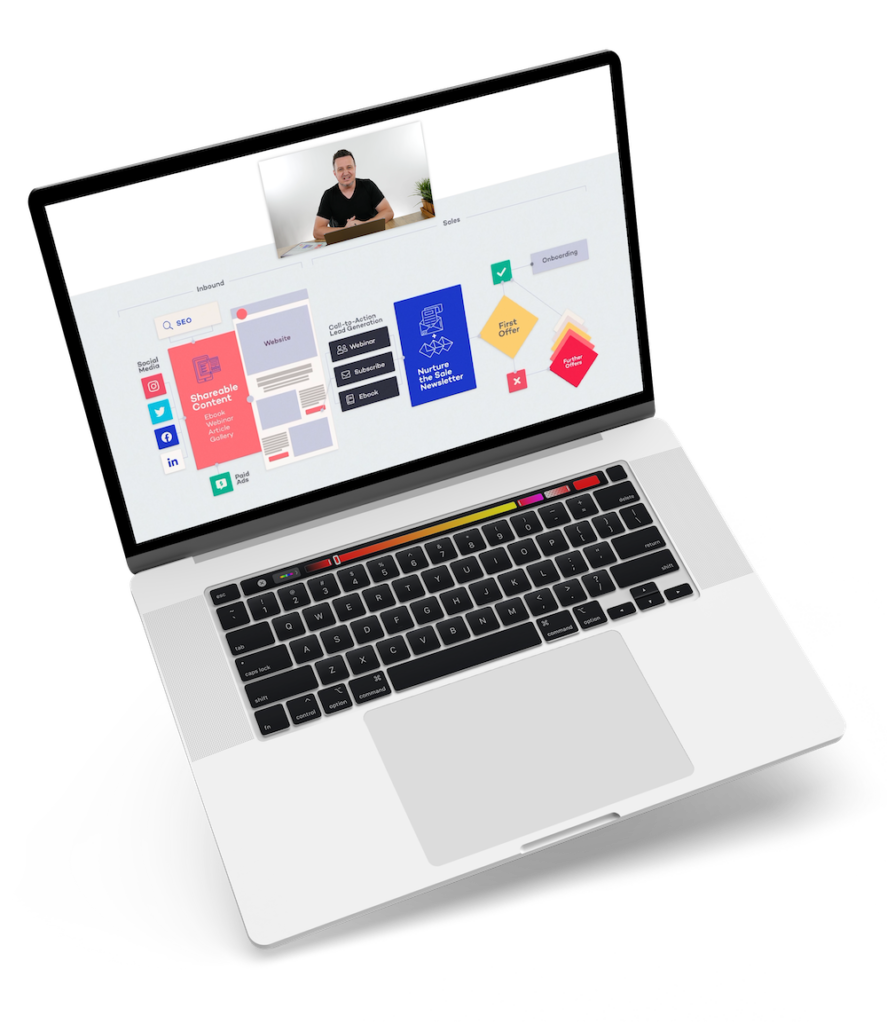Facebook suddenly became a puzzle you couldn’t solve the moment you decided to use it to promote your business.
You are serious about your business, building a strong online presence, and you’re not naive to think that you can just post something on Facebook and expect everyone to see it. So you’ve listen to podcasts, read blog posts, embrace advice from experts, and invest more time posting photos, video, and sharing links to your website. Yet, nothing moves the needle.
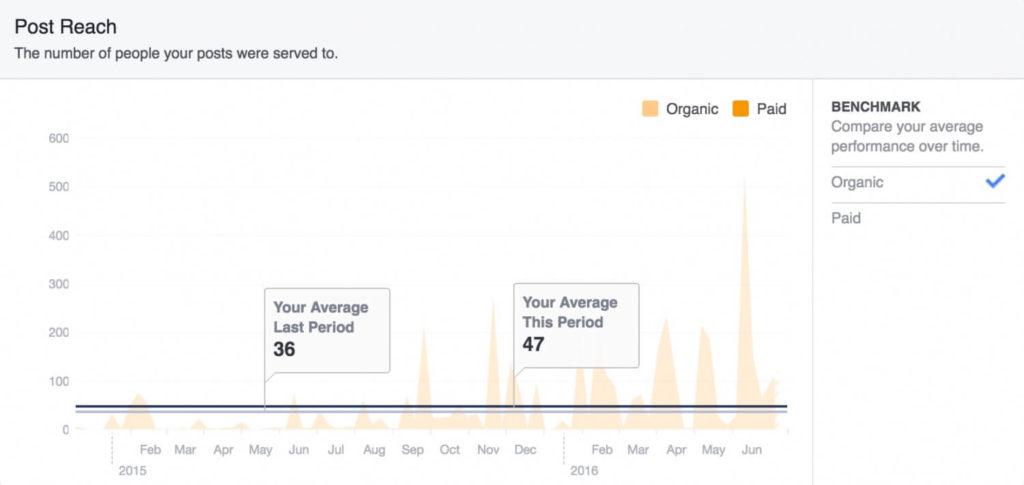

It is frustrating to spend so much time posting on Facebook, working hard to write something to share and then see your organic reach hit 27 people. It feels like Facebook hates you and all they want is for you to pay them to put your content in front of more people – including those who have already “liked” your page.
You belief is half true. Facebook does want you to pay them.
The other half of the truth is that Facebook has a genuine concern for the user experience and they want to deliver an experience that:
- Keeps a user in Facebook as long as possible.
- Increases the user’s enjoyment in Facebook.
If your Facebook posts are not getting a decent organic reach it’s due to one large fact: No one is indicating they want to see your content.
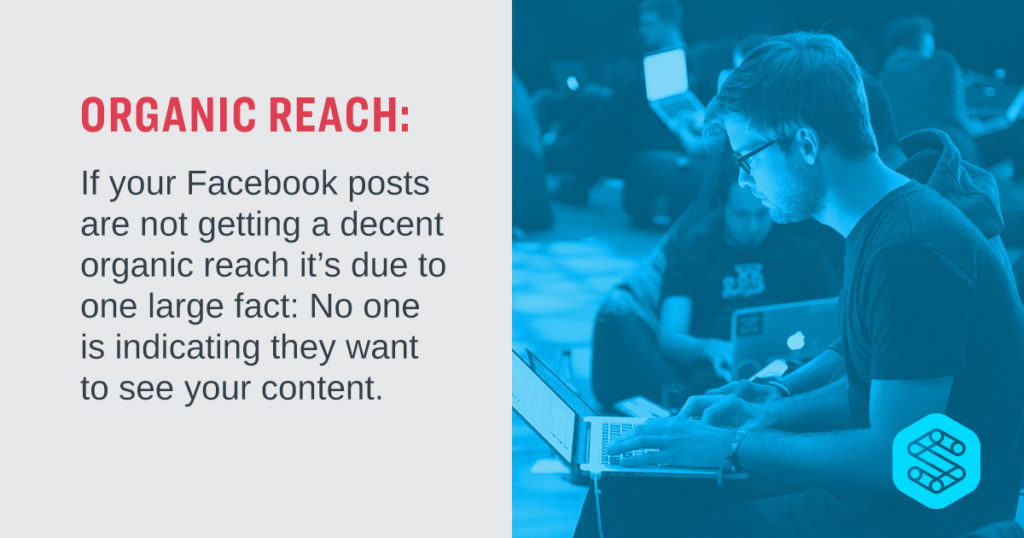

How Facebook Determines Who Will See Your Content
There are algorithms and formulas that Facebook uses for distributing reach and if you get caught up trying to “figure out” how to manipulate their system you are only delaying growth in organic reach.
What Facebook’s algorithms measure is a user’s interest in your content. When someone Likes, Comments, Shares and Clicks on your post, Facebook’s algorithm takes note. It is almost as if Facebook is saying – “Okay, this user spent more time and more energy engaging with Starbucks’ content. I’ll keep that in mind.”
You may see another Starbucks post pop up in the next week or so and if you engage with that content the Facebook algorithm responds – “Okay, good, got that one right. This user does like Starbucks. I’ll look for another post to share with him in the next couple days.”
Facebook then serves up another post in the next 36 hours or so, and when you engage with it the algorithm responds – “This user really likes Starbucks and that keeps him logged into Facebook longer. I’ll start showing this to him a lot more.”
And thus, the reason why you see what you do like and you do not see what you do not like while on Facebook.
This is also the reason why your Facebook fans do or don’t see your content.
The Shortcut to Increasing Organic Reach On Facebook for Your Business
Here is the most obvious frustration with the explanation above, “Okay, but how do I get someone to see my post in the first place so they CAN engage with it and Facebook can see that folks dig it?”
The shortcut to getting your content in front of people is promoting your content through ads and boosting. That will explode your reach and place your content in front of more people. If they begin to react, Facebook makes a note that “This user really likes this content” despite whether it’s paid or not.
Again, Facebook’s two goals for a user is to:
- Keep them in Facebook as long as possible.
- Increase their enjoyment in Facebook.
These two goals are directly tied to Facebook’s model for generating revenue. The longer a user is on Facebook and the more they enjoy it, the more ads Facebook can place in a feed and the more money they will make.
Here’s where the Facebook organic reach and paid reach dichotomy gets really interesting.
Content That Will Get A High Organic Reach On Facebook
Content that helps Facebook achieve its two main goals will gain higher organic reach. We will call this type of content “good content”.
User content that does not help Facebook achieve their two primary goals will not be given a large organic reach. We will call this type of content “bad content”.
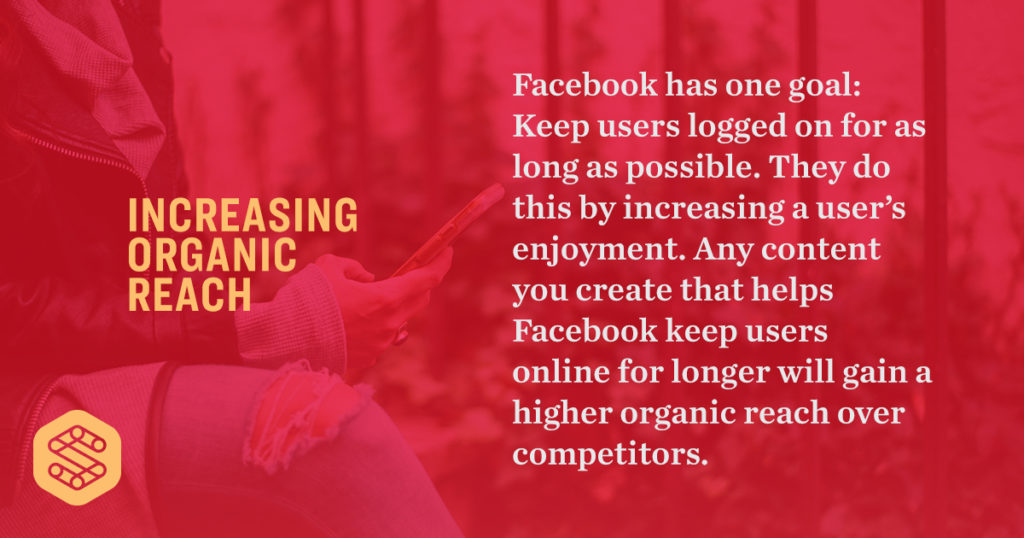

The reach of good content is supported by the advertising dollars of bad content.
Stated another way, you are either financially supporting Facebook by paying for reach or you are organically supporting Facebook by providing engaging content that keeps a user in Facebook longer and improves the overall enjoyment of Facebook.
*It is noted that not all “bad content” is in fact, bad content. Many are ads that we use to get our message out in front of new faces. This is a separate topic for a separate discussion. This article is focused on reaching our current audience and those connected to our current audience.
The Hard Way to Increase Organic Reach On Facebook – And Exactly What Business Owners Should Be Doing
Nearly everyone experiencing success on Facebook shares one common trait responsible for that success – consistency. While we typically associate consistency with showing up regularly, there are actually three types of consistency that go into good content.
- Consistent in scheduling Facebook content.
- Consistent in the type of content you share on Facebook
- Consistent in the quality of content you’re producing on Facebook.
Unless you are Kim Kardashian, you will have to be absolutely intentional in all three of these categories.
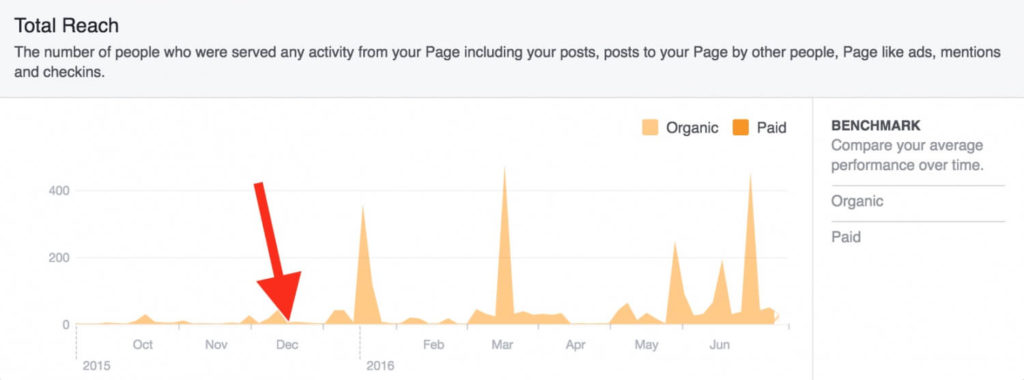

Consistent Scheduling on Social Media
Consistency in your posting schedule makes sense. Show up regularly and on time, delivering content. Avoid large chunks of time in between posts and regularly contribute to a platform whether or not you are getting the response you want.
Here is what it looks like to not follow a consistent schedule:
- You have time to create a post on Facebook today but your next post doesn’t come until 10 days later.
- You have a burst of posts, maybe two or three a day, this week and then take a three week break before your next post.
- You go multiple days in between commenting and contributing to content that other people are creating on social media. For large brands, this means finding content that others are creating related to your brand and for individuals (like me) it means engaging with the pages of those who are your ideal client.
Here is what it looks like to follow a consistent schedule:
- Choose which days of the week you will post and make sure to post each time those days roll around.
- Choose how many posts you will make on each of those given days.
- Select time slots to post in and do your best to share content around those time slots.
- Take a specific amount of time each day to scroll through your news feed or search Facebook for content created by others, those who are your ideal clients.
Consistency in your schedule is a no brainer. If you’re not following a consistent schedule for your posting and not consistently engaging with content created by others you will have a hard time generating a growing amount of organic reach.
Consistent Content on Social Media
You can post consistently every day/week/month doing everything right in terms of when you share and still miss the boat on improving your Facebook organic reach.
Why?
Equally important to consistency in your schedule is consistency in the type of content you share. If you talk about social media today and then Disneyland tomorrow and on day three leadership you really aren’t giving anyone an opportunity to truly engage with your brand or your voice.
Being a mile wide and an inch deep. You have a lot of interests and want to talk about everything you are interested in. That’s fine, but know that the people who are going to engage daily (and tell Facebook this is “good content”) won’t have all those same interests.
Having one major theme and posting content consistent with that theme gives users a reason to engage with your content daily.
For example, you may be interested in three topics.
- Social media
- Topic B
- Topic C
Your readers are interested in:
- Social media
- Topic F
- Topic G
Social media is what you have in common with your readers and if all you talk about is social media your readers will look at every post. The moment you start talking about topics B and C your readers disengage because they aren’t interested in those topics. Your readers are interested in social media… so only talk about social media. Go talk to your mom about Disneyland.
The point I’m trying to make is that you must lean into one focus so that your readers are not alienated by the content they are not interested in.
Consistent Quality on Social Media
If you are like most marketing novices or entrepreneurs, you find yourself having a chunk of time to create strong social media content today. Next week, you struggle to make time to create… even if it is to tell people you are busy. The quality of content that many entrepreneurs create swings from one side of quality to the other based upon how much time they have this week vs next week.
When someone discovers you on Facebook and resonates with your voice they will look for more information on who you are and what type of content you share. If they discover you during a stretch of time when you had plenty of time to create great content your feed is going to be filled with value. As long as you continue to put out top notch content, they’ll continue to engage – after all, that’s why they followed you in the first place.
When your quality suddenly drops because you no longer have time, users take notice. They react less, click less and comment less.
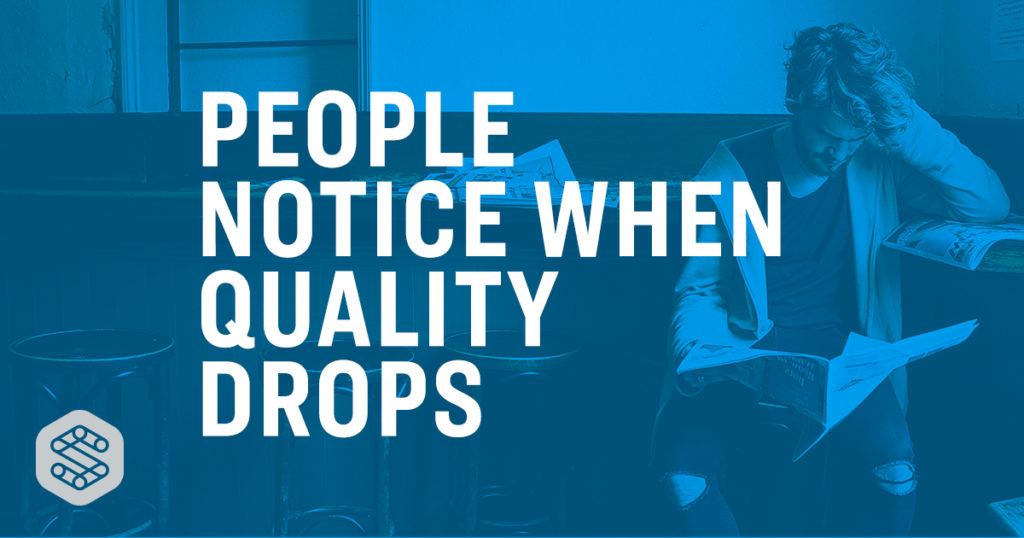

Facebook takes note and begins scaling back the amount of content it shows a user from your page.
It has very little to do with a user no longer being interested in you. They still like you. It has everything to do with Facebook trying to achieve its top two goals:
- Keep a user in Facebook as long as possible
- Increase the enjoyment level of a user while using Facebook
Facebook doesn’t play favorites. Either your content is good and engaging or it isn’t.
Increasing Your Organic Reach Doesn’t Come From “Figuring Out” Facebook
Facebook for business has very little to do with figuring out Facebook. Marketing novices get caught up in things like:
- When is the best time to post?
- How long should my posts be?
- Should I do a link or a photo?
- Does text on photo perform better than a photo without text?
- Is Monday better to post than Thursday?
Every one of those questions above is valid and yet, when you land on any given answer the impact actually seen in your reach is marginal. Why? Because content is king and consistency is queen.
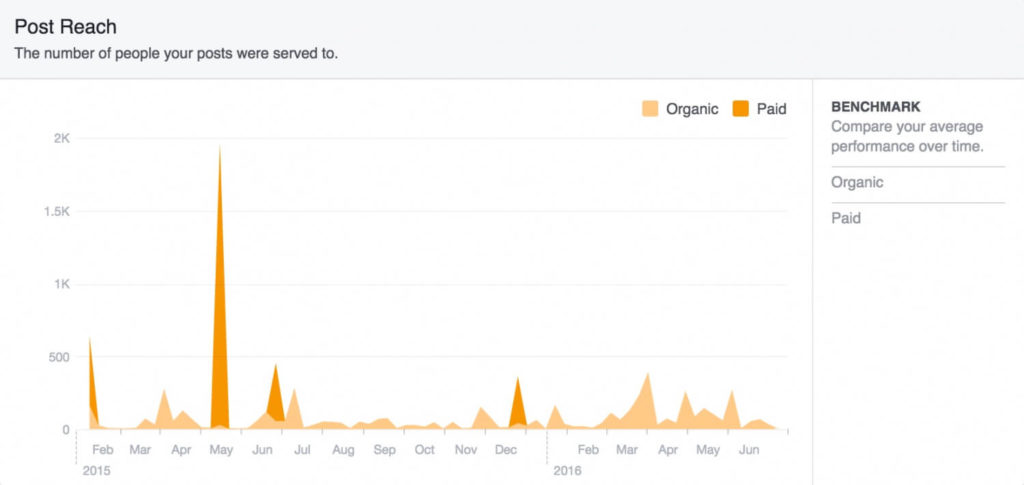

Easy Tips for Getting More People to See Your Content Today
If you are ready to put in the effort to produce consistent content and really go after using Facebook for business here are a few ways you get can your content in front of more people.
- Create content absolutely unique to Facebook and don’t share it anywhere else. Then, tell your followers on other social media networks what you just shared on Facebook and how to find it.
- Use a Facebook post as a way for users to leave comments on blog posts. Rather than allowing people to comment directly on your website, create a link on your website saying, “Click here to leave your comment on Facebook” and redirect them to a post you created for that blog entry.
- Tag specific people in your Facebook post comments asking them to share their reaction to the post.
- Ask individual users to go to your Facebook post and leave a comment or share the post. This type of engagement will increase the organic reach of your post and place your content in front of new users.
- Do not scheduled your Facebook posts from a third-party social media management tool such as Buffer or Hootsuite. Study after study shows that Facebook favors content that has been created and shared directly through Facebook. Facebook Pages have a scheduler built in and if you want to schedule content, use their scheduling tool.
There Are No Shortcuts When it Comes to Facebook for Business
Maybe you are exhausted from reading everything above. You are thinking to yourself, “Are you kidding me? All that work has to go into creating content for Facebook that actually gets seen? That’s insane.”
No. Yes. Yes.
It’s up to you which path you want to take. You either put in the hard work or you keep doing what you always done and keep getting the same results. If you want Facebook to work for you (and it can) it’s time to focus on putting quality content that Facebook can’t help but take notice.
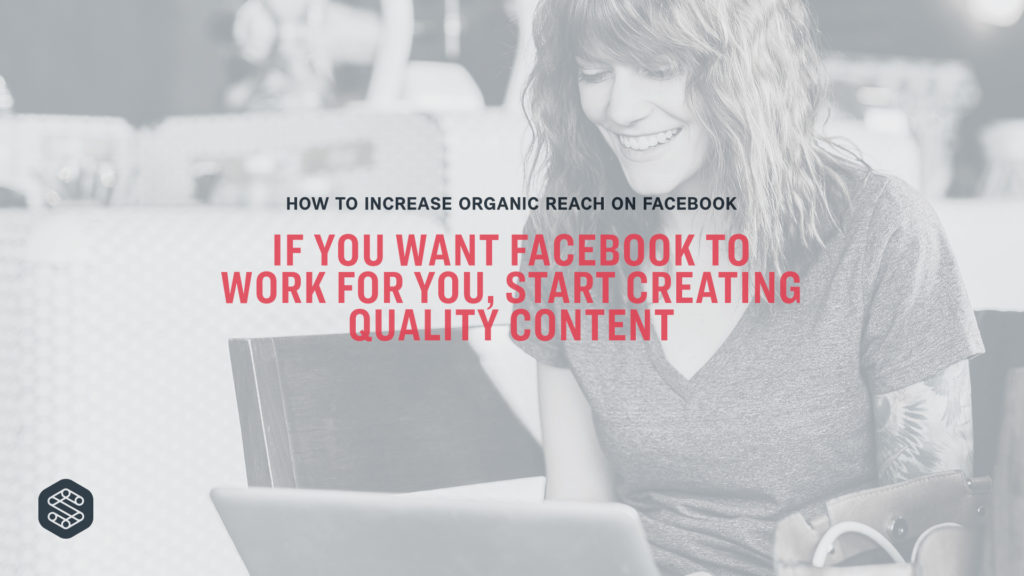

Beyond what you’ve already learned in this post you can download a free checklist that will immediately help you begin creating “good content” on Facebook for your business. Just enter your email and click the button and you’ll get immediate access to the ebook that has already transformed the way marketing novices just like you are using social media and Facebook for business.
